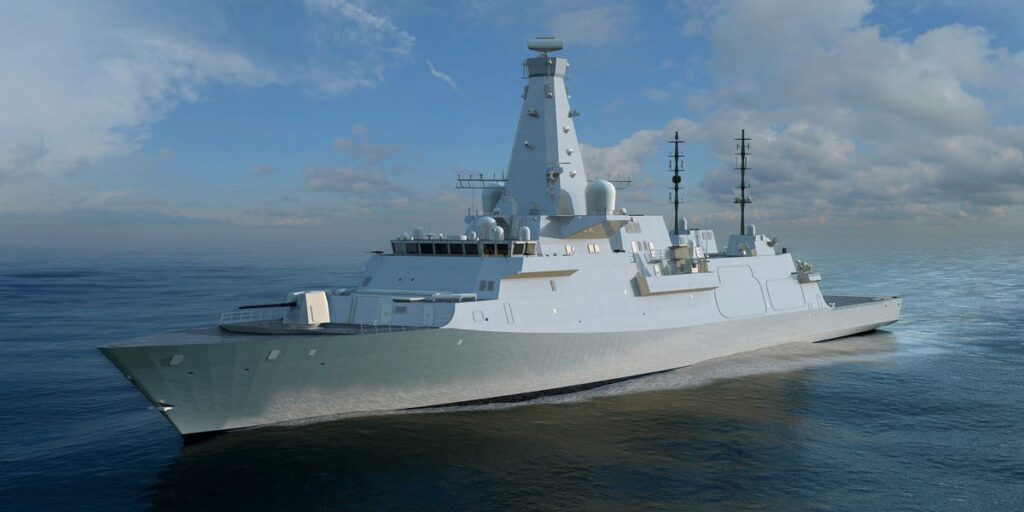NATO ally Norway is buying advanced warships from the UK in its biggest defense deal ever. NATO officials say the move will sharply strengthen its ability to hunt enemy submarines in the North Atlantic.
The £10 billion ($13.5 billion) agreement for Type 26 frigates will tie Norway’s navy more closely to Britain’s, creating a combined fleet of 13 vessels designed for anti-submarine warfare. London says the ships will bolster NATO’s presence in northern Europe as tensions with Russia rise.
A NATO official, speaking on the condition of anonymity to discuss the allied military capabilities, said the deal provides Norway with “advanced capabilities” in anti-submarine warfare and “other critical missions in the maritime domain.”
The official said that this “contributes to the broader collective defense” of the alliance.
Norway shares a relatively small border with Russia compared to its Nordic neighbor and newly minted NATO ally, Finland. However, the country has a long stretch of coastline well above the Arctic Circle with direct access to the strategic Norwegian and Barents seas.
Russian submarines traveling from the Murmansk region, where the Kremlin’s Northern Fleet is based, to the North Atlantic and beyond have to sail through waters north of Norway, making the country a prominent player in anti-submarine warfare (ASW) operations in the High North region.
The acquisition of the Type 26 frigates is expected to help NATO better monitor Russian submarine activity around the North Atlantic and protect critical infrastructure, an increasing focus for the alliance amid a rise in undersea sabotage incidents around Europe.
The NATO official said that “advanced technological platforms” like the Type 26 frigates “advance the military and technological advantage of allies.”
“Allies bring a range of capabilities in ASW, and advanced platforms contribute to a stronger, more adept, and collective capability for the alliance,” they added.
The Type 26 (also known as the City class) frigate is in development and intended to replace the Royal Navy’s Type 23 warships. Built by UK defense contractor BAE Systems, Canada, Australia, and Norway have also ordered these vessels.
The new Type 26 frigates are specifically designed to detect, monitor, and combat submarines. According to the UK Royal Navy, the warships will have “acoustically quiet” hulls to reduce underwater noise, a towed sonar array for active and passive detection, and a torpedo warning capability. The frigates will also be equipped with a powerful radar.
Although designed primarily for anti-submarine warfare, the Type 26 frigates will also be equipped for air defense and other combat missions. The Royal Navy’s ships will feature a 5-inch naval gun with a 20-nautical-mile range, launchers for dozens of interceptor missiles, two Phalanx close-in weapon systems, a pair of 30mm cannons, and multiple general-purpose machine guns.
The first three of the new frigates are expected to enter service in the Royal Navy in the 2020s. Norway’s government said delivery of the warships will start in 2030 and that they will be as identical as possible to the UK warships, with the same technical specifications. Oslo was also considering French, German, and American vessels but landed on the British ships.
“With Norway, we will train, operate, deter, and — if necessary — fight together,” John Healey, the UK defense secretary, said in a statement on Sunday.
“Our navies will work as one, leading the way in NATO, with this deal putting more world-class warships in the North Atlantic to hunt Russian submarines, protect our critical infrastructure, and keep both our nations secure,” he added.
Russia operates one of the largest submarine fleets in the world, with an estimated 64 active boats. Naval vessels are just one of several ways that NATO monitors Moscow’s boats in the Atlantic, with patrol aircraft being another asset of choice.
The Norwegian government said that its Type 26 frigates will be equipped with anti-submarine helicopters, though a specific type has not yet been determined. Oslo also flies the Boeing P-8 Poseidon ASW aircraft.
Read the full article here















